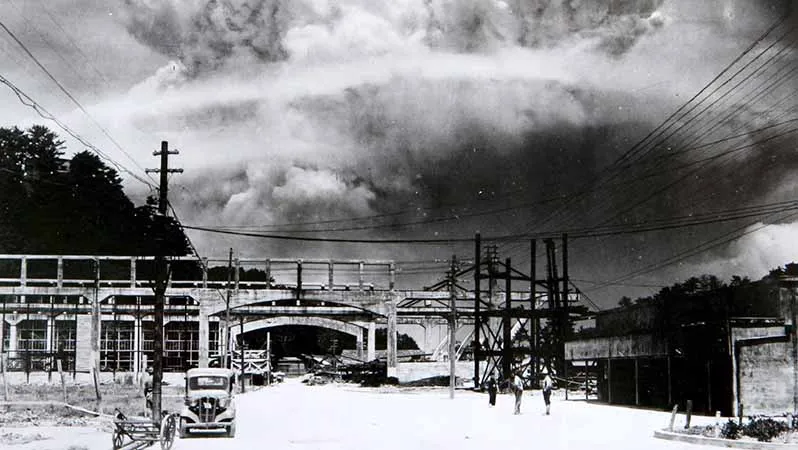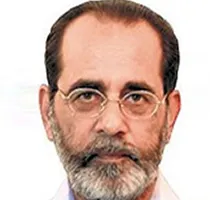-
CENTRES
Progammes & Centres
Location

On May 27, Barack Obama became the first serving American President to visit Hiroshima, 71 years after nuclear bombs were dropped on Hiroshima and Nagasaki by the United States, the only country to have ever used nuclear weapons. Richard Nixon visited Hiroshima in 1964, four years before he won the presidential election, and Jimmy Carter had visited in 1984, three and a half years after he left the White House. Mr. Obama’s historic visit will go down as part of his nuclear legacy, which remains a mixed one. Though the visit took place when he has no more elections to fight, it was nevertheless an act of political conviction reflecting his deep disdain for the “Washington playbook”.
Less than three months into his presidency, Mr. Obama had made a landmark speech in Prague in April 2009 (which contributed to his Nobel Peace Prize) where he had called for a change of thinking about the role of nuclear weapons in the 21st century. Promising US leadership, he also laid out the vision of a world free of nuclear weapons. < class="aBn" tabindex="0" data-term="goog_1301211792">< class="aQJ">Seven years later, progress in this direction has been modest. The New Strategic Arms Reduction Treaty (START) concluded with Russia limiting both countries to 800 launchers (Intercontinental Ballistic Missiles, submarine-launched ballistic missiles and heavy long-range bombers) and 1,550 warheads each was concluded in 2010 after which the dialogue has stalled. Gains of the Nuclear Security initiative which Mr. Obama launched with a summit in 2010 and concluded with another summit earlier this year were limited to the securing of and restricting the civilian use of highly enriched uranium (HEU) and plutonium so that it does not fall into terrorist hands. On the other hand, the US has announced ambitious plans to spend $1 trillion for modernisation of its nuclear arsenal over the next three decades. In a Nuclear Posture Review, the US has maintained the right of “first-use” of nuclear weapons though limited to “extreme circumstances”.
Within the region, his visit revealed that historical memories of the regional conflicts are deep seated and the scars have yet to heal. There was disquiet in many Asian countries that Mr. Obama’s visit would be an endorsement of Prime Minister Shinzo Abe’s policies that seek to move Japan beyond the “guilt” of World War II and the imposed pacifism, to becoming a “normal country” ready to play a greater role in global affairs. Chinese commentators recalled the horrors inflicted by Japanese militarism, emphasising that this could not be obliterated by claiming nuclear victimhood. Some suggested that Mr. Abe should have visited Nanjing and Pearl Harbour first. In the Philippines, there were calls for atonement for the Bataan death march in 1941, in which nearly 10,000 American and Filipino prisoners of war perished.
South Korea refrained from an official comment, but a leading daily characterised the visit as “imprudent and regrettable”. Clearly, Mr. Abe’s apology last December on the issue of “comfort women” used as sex slaves by the Japanese military during its Korean occupation is seen by many as inadequate. Others in South Korea wanted recognition of the fact that out of the 200,000 victims in Hiroshima and Nagasaki, more than 40,000 were Koreans, taken to Japan as forced labour. It is a sensitive issue because Korean survivors who returned home after the war faced a difficult life; they were forced to hide their ordeal because of domestic politics. For a long time, the official narrative in Korea justified Hiroshima and Nagasaki as necessary for Korea’s liberation. It was only in the 1990s that they began to receive official health benefits from their government, and in 2003 that they won a court case in Japan that obliged the Japanese government to cover medical expenses for the foreign hibakusha.
In a press conference on May 26 in Japan, Mr. Obama referred to the Democratic People’s Republic of Korea (DPRK) nuclear programme and the deployment of tactical nuclear weapons by Pakistan as the most worrying aspects of the current global nuclear threat. Since 2006, North Korea has conducted four nuclear tests, the latest in January, claiming it as a hydrogen bomb. Sanctions have not been effective and there are clear limits to which China will push the North Korean regime (or Pakistan for that matter). Regime change in the DPRK is a scary prospect for both China and South Korea. One view is that the North Korean threat serves a US purpose; the US maintains nearly 30,000 soldiers on the peninsula and deploys modern systems including ballistic missile defences. On the other hand, US presence certainly curbs nuclear ambitions in Japan, South Korea and Taiwan which China acknowledges but grudgingly. More than a fourth of South Korea’s electricity is generated by its two dozen reactors, but unlike Japan, it undertakes no enrichment or reprocessing, making it completely dependent on other countries for its nuclear fuel. This restriction is now increasingly criticised as unfair, but any change would certainly be construed as provocative by China and North Korea.
 The horrors of Hiroshima and Nagasaki have helped generate a norm against the use of nuclear weapons though nuclear abolition remains a distant goal. Part of the reason lies in the myth-making associated with this issue. There is growing scholarship today that questions the US conventional narrative that using the nuclear bomb was necessary to end the war and save the loss of American and Japanese lives resulting from a prolonged invasion. This idea of the military utility of nuclear weapons has been a key driver for the pursuit of nuclear weapons and set the stage for the obscene accumulation of more than 70,000 weapons by the US and the Soviet Union during the 1970s and 1980s.
The horrors of Hiroshima and Nagasaki have helped generate a norm against the use of nuclear weapons though nuclear abolition remains a distant goal. Part of the reason lies in the myth-making associated with this issue. There is growing scholarship today that questions the US conventional narrative that using the nuclear bomb was necessary to end the war and save the loss of American and Japanese lives resulting from a prolonged invasion. This idea of the military utility of nuclear weapons has been a key driver for the pursuit of nuclear weapons and set the stage for the obscene accumulation of more than 70,000 weapons by the US and the Soviet Union during the 1970s and 1980s.
During the Cold War, another myth was generated that the best route to nuclear disarmament was through non-proliferation and the Treaty on the Non-Proliferation of Nuclear Weapons (NPT). The truth is that the NPT has had no impact on nuclear arms reductions. Its limitations are apparent in that it recognises only five nuclear weapon states (the US, Russia, the UK, France and China) but is unable to deal with the reality of India, Pakistan, Israel and North Korea’s weapon programmes. Clearly, it has reached the limits of its success, but this acknowledgement flies in the face of the myth.
Today’s nuclear world is very different from the bipolar world of the Cold War dominated by nuclear rivalry between the US and the Soviet Union, the two superpowers. The centre of gravity is inexorably shifting from the Euro-Atlantic to the Asia-Pacific, a more crowded geopolitical space. The number of nuclear players has grown, and asymmetry in doctrines and arsenals makes the search for security more elusive. Outer space and cyber space have become new domains of contention even as missile defences and conventional precision strike capabilities blur the threshold between conventional and nuclear weapons.
Mr. Obama’s visit is a reminder that Hiroshima remains the nuclear conscience keeper of the world. In the 20th century, it symbolised the horror of nuclear war; the question is whether in the 21st century which is often described as the Asian century, it can come to symbolise a new beginning. This requires going beyond the old myths but a dialogue under the shadow of the Genbaku dome is a good place to begin. From a city of remembrance, Hiroshima can then become a city of hope, a place where the first seeds for a world free of nuclear weapons were planted.
This commentary originally appeared in The Hindu.
The views expressed above belong to the author(s). ORF research and analyses now available on Telegram! Click here to access our curated content — blogs, longforms and interviews.

Ambassador Rakesh Sood was a Distinguished Fellow at ORF. He has over 38 years of experience in the field of foreign affairs economic diplomacy and ...
Read More +